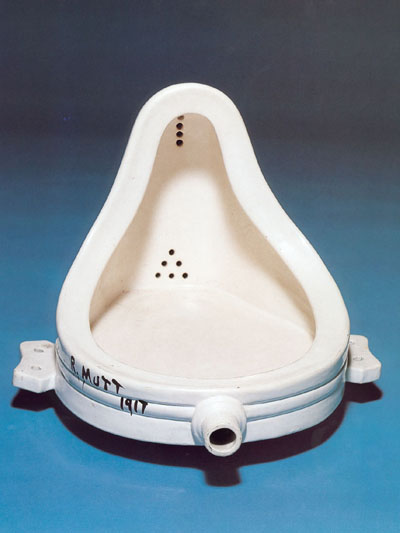 |
duchamp's fountain in 1917, "richard mutt" entered a man's urinal as a sculpture in an exhibition organized by the new york society of independent artists. marcel duchamp was a founding member and its stated policy was to accept "any work by any artist who paid a six dollar fee". mr. mutt payed the entry fee, but the piece was rejected without discussion. later on there was an article in the magazine "the blind man" defending the object (duchamp was an editor, and therefore most probably it was written by him): "they say any artist paying six dollars may exhibit. mr. richard mutt sent in a fountain, without discussion this article disappeared and was never exhibited. what were the grounds for refusing mr. mutt's fountain: 1. some contend it was immoral, vulgar. 2. others, it was plagiarism, a plain piece of plumbing. now mr. mutt's fountain is not immoral, that is absurd, no more than a bath tub is immoral. it is a fixture that you see every day in plumbers' show windows. whether mr. mutt with his own hands made the fountain or not has no importance. he chose it. he took an ordinary article of life, placed it so that its useful significance disappeared under new title and point of view-created a new thought for that object. as for plumbing, that is absurd. the only works of art america has given are her plumbing and her bridges." though he never confessed this, most probably "r.mutt" was marcel duchamp himself. submitting an ordinary piece of everyday-life to an art exhibition, he thus suggested a new understanding and concept of art. its specific feature lies not in the work itself, but in the idea behind it. emphasis is placed upon the artist not as craftsman, but as gifted perceiver whose choice of an object is seen as a creative act. the readymade thus becomes the focus of a meditation on the relation between external things and our perception of them.
|

